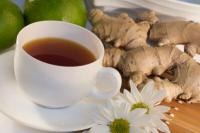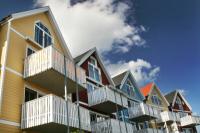VIDEO: Conifers are turning brown
Conifers are evergreen coniferous plants that are very popular as a hedge or to structure the garden in this country. The following plants belong to the conifers: yew, cypress, juniper, pine and spruce as well as arborvitae, too Thuja called. Usually conifers are easy to care for. However, if you get brown needles, you should investigate the cause.
Location, lack of water or waterlogging - possible causes
Conifers like it bright, but blazing summer midday sun is not what they want. They are shallow roots and depend on a regular supply of water in hot spells. Otherwise they will react by turning the needles brown.
Take a soil sample by hand. If the earth crumbles when you open your hand, the soil is too dry. If soil adheres to the hand, the moisture is sufficient. Lack of water can be a cause of your conifers to turn brown.
You can compensate for this dry damage with regular watering. In severe winters, there is also often "frost dryness". This is caused by the winter sun when the roots cannot absorb moisture from the frozen earth: the conifers turn brown. Tip: Water conifers and hedges again thoroughly before the onset of winter.
Waterlogging in the soil is also unacceptable for conifers. You can remedy this by draining the soil through drainage. Otherwise you will have brown needles and little pleasure in your coniferous plants.
Epsom salt is always in demand in the garden when there is a magnesium deficiency in the conifers ...
Conifers turn brown - cause soil conditions
If the pH of the soil is too low, the needles can turn brown. Therefore check the soil condition with a pH measuring stick.
Optimal pH levels: Juniper, False Cypress and fir: 5.0 to 6.0. Yew, pine and spruce: 5.5 to 6.5 and tree of life: 6.0 to 7.5. The low pH values apply to sandy soils, the higher values to soils with a higher proportion of clay.
Tip: You can raise the pH value with a lime. Algae lime, for example, is suitable for this.
Brown needles from lack of nutrients
Many hobby gardeners assume that conifers do not need any fertilizers. This mistake becomes apparent at the latest when the needles turn brown. Epsom salts should be supplied to conifers at least once a year. Epsom salt remedies a common magnesium deficiency in plants.
The rule of thumb for the dosage is: 100 grams of Epsom salt at a height of one meter each. After that, water the plant thoroughly. In addition, you should treat your coniferous plants with NPK-fertilizer - contains nitrogen, phosphorus and potassium - supply. Special NPK fertilizers for conifers are available in stores.
However, you should also measure the pH of the soil here beforehand. If the pH value is too low, the nutrients can only be partially absorbed by the plant.
Brown needles from pest infestation
Infestation by Sitka spruce lice is barely visible, but exhausting for the conifers. The yellowish-green lice with red eyes become visible if you hold a white sheet of paper under a branch and tap it lightly: you will fall on the sheet. Serbian spruce, blue spruce and Sitka spruce are particularly affected by these pests.
Another haemorrhage comes from the pine wool aphid. They form colonies that can be recognized by a thick white wax wool. The needles break off at the sucking points and the young shoots of the pine bare.
Tip: In both cases, spraying the entire plant thoroughly with a rapeseed oil product helps. The infestation is contained and the coniferous plants can recover.
Brown coloration due to environmental influences and signs of age
If you use a lot of road salt in winter, you will likely have problems with your conifers. They are very sensitive and develop brown needles. Environmental influences such as high ozone levels and sulfur dioxide can also make themselves felt through brown needles and deformations. Tip: Cut back the discoloration and water thoroughly to reduce the salt concentration in the soil.
In conifers that are already old, brown needles close to the trunk and the bleaching of the plants can also be a sign of aging. Sooner or later you will have to replace the plants with new plantings.


